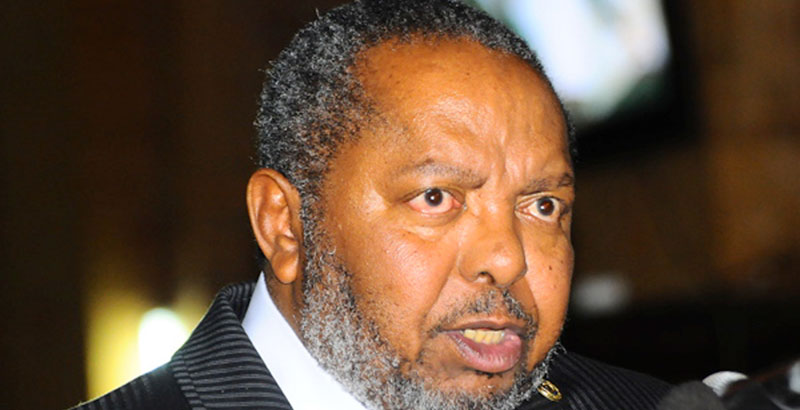Columnists
Uganda’s economy in 2018
Analysis, projections and risks everyone needs to know!
Economists have been found guilty of groupthink, guided by political ends and using error-prone gravity modelling. Therefore, I do not want to pretend to have forecasting powers that don’t really exist. But I can confirm that I have a memory that often helpsme to connect the past to the present.Byextension I can guess where trends might be heading.
Business cycles are part and parcelof economies.Uganda’s economy has, in the past six years, experienced one of its worst times in three decades. Last year, Gross domestic product (GDP) was some 17.4% below what it would have been had the growth rates that prevailed between 1990 and 2010 continued.
In the past 25 years, servicesand industry have been Uganda’sgrowth drivers. However, last year they performed badly, experiencing several quarters of negative growth. Consequently, Uganda’s GDP reduced to USD 25.5bn in 2016/17, down from USD 27.5bn in 2015/16.
The results of this dip in economic growth were far-reaching.In September this year, the Uganda Bureau of Statistics (UBOS) released results of the 2016/17 National Household Survey where it found that the proportion of Ugandans living in poverty had increased significantly. It increasedto 27% from 19% in 2012/13. In absolute terms,10 million Ugandans are now living in poverty.
“Overall, we observed a decline in the livings standards and reduction in the distribution of income between the two most recent national household surveys,” UBOS concludes.
That was 2017. So, what is in store for Ugandans in 2018? How is the economy likely to perform, and what are the likely risks?
Although immediate economic outlook still looks hazy, the International Monetary Fund (IMF) projects that growth for Uganda’s economy might rebound to 5.5% by June 2018. This is a reasonable forecast given that agriculture is likely to recover from the recession it experienced on account oflong dry spells last year.The rains have performed relatively better this during the September-December 2017 season.
Researchers at the Center for International Development (CID) at Harvard University still stand with their earlier prediction that Uganda (jointly with India) will be the fastest growing economy in the world in the next seven years. In absolute terms, they forecast Uganda’s economy will grow at 7.7% while in per capita terms it will grow at 4.5% annually to 2025.
Drivers of economic optimism in 2018
First, the World Bank released a report last month indicating that prices for agricultural commodities, including food and raw materials, are anticipated to edge up next year.Uganda is a net exporter of such commodities as coffee, fish, maize, tobacco, tea and flowers whose prices are projected to rise in 2018. This is likely to earn the country more foreign exchange to buy some of the value of the shillingback.
Second, private sector credit is likely to rise in 2018. Bank of Uganda (BoU) has continued with cautious easing of monetary policy, reducing the Central Bank Rate (CBR) to 9.5% in October from 12% at the beginning of 2017.
Although the effectiveness of the CBR in influencing banks to reduce lending rates has been questioned in some quarters, banks have actually started to reduce interest rates. Lending rates reduced to just over 20% in October from 22% at the beginning of the year.
In addition government has reduced its appetite for bank credit. One year Treasury Bills were issued at 8.6% in October, down from 13% in January 2017. This is likely to raise bank credit going to private sector, and by extension more investments and startups are likely to come up.
Third, the anticipated recovery in consumer spending and effective demand on account of agricultural sector recovery expected out of the good rains in the outgoingseason. This is likely to improve the “Changes in Inventories” (CII) index – thestocks of goods held by firms to meet unexpected fluctuations in sales. Inventorieshave been piling up over the years. For example, Uganda’s CII had increased to USD 203 million in 2016, from about USD 65 million held in 2010.
Fourth, the multiplier impact on economic growthof public investment in infrastructure is likely to begin in 2018. For five years now, government has suck trillions of shillings in public infrastructure (particularly powerand road construction, and oil). Such investments often do not provide an immediate stimulus to aggregate demanddue to implementation lags. However, most of them are expected to start stimulating production, demand and private investment.
On the other hand, the Business Tendency Index (compiled by the BoU to measure the level of optimism business owners and executives have about the prevailing and expected business environment) shows that the level of business optimism is rising.
The optimism is further portrayed by the “Leading Economic Index” (LEI), currently estimated at 0.56 in October 2017 having recovered from 0.4 in March 2017. This implies that prospects among economic agents, going forward, are rising.
Fifth, with Kenya concluding its presidential elections last month, the East African region has gone through the period of uncertain political business cycles.The uncertainty surrounding political elections often negatively impact foreign direct investments (FDI), particularly portfolio and equity investment. Now the region has at least three years to concentrate on economics.
Risks that are likely to impact the recovery
There are, however, a number of downside risks to the projected economic recovery and growth.Theongoing age limit debatemight prolong the political uncertainty that has engulfed Uganda’s economy for some time. The earlier it is resolved the better. The best option would be to take it off the debate menu by replacing it with a more progressive debate.
Secondly,the dwindling fiscal space,hampered by the underperformance of domestic revenue, high and rising public debt, as well as the depreciation pressureexerted on the shilling leading to depletion of reserves also poses a risk to recover and growth. The need to build capacity to mobilize domestic and external resources should not be over emphasised.
Rising vulnerability among Ugandans in the lower income quintiles, on account of socio-economic shocksremains a big risk for economic recovery and sustained growth. recent surveys indicate that over 42% of Ugandans that had escaped poverty remain vulnerable to falling back into poverty due to lack of social protection. The Senior Citizens’ Grant, targeting older persons of 65 years and above, has remained narrow and distorted.
The unresolved war in South Sudan and unrest in Burundi still remain a big threat to Uganda’s economic recovery and sustained growth. South Sudan in particular had become a strategic market for Uganda owing to its proximity, market familiarity, and less adherence to stringent standard requirements.
The uncertain global economy: the stunting China, the Brexit, and other geo-political events have also not disappeared yet. Others include the self-inflicted riskssuch as failure to implement what we set ourselves to do, the rampant theft of public money in government, fiscal indiscipline through spending money on unproductive activities instead of investing in productive activities, as well as poor planning.
In a nutshell, although much of the past and recent has not been good as far as the performance of Uganda’s economy is concerned, the immediate and medium future promises relatively good news.
Going forward
Going forward, Uganda needs a rethink of her development strategy. The ‘neo-liberal’ dogma in which private investment is supposed to be ‘good’ while State investment is ‘bad’ has been proven wrong.Uganda has failed to change the economic structure, failed to sustain growth, itselfhas remained jobless and non-inclusive.
As a ‘late industrialiser’ the State will have to invest directly in strategic industries such as iron and steel, petroleum, and agro-value chains, and export-oriented manufactures.We need to end the debate on agriculture by increasing investment in value chainsto 10% of the budget.
This can be done without taking money away from other projects. Removal of duplications and consolidation of the budget in the sector can easily achieve this target.
The truth of the matter is: Uganda’s economy is an agrarian economy – whenever agriculture fails, the economy stops. Absorption issues, perennially raised by technocrats, are bad excuses used to hide inefficiencies and weaknesses in public investment management.
Secondly, to actualize the good prospects above, government will need to breakbarriers to private investment, cut money spent on lower priority areas, enhance fiscal governance, and improvepolicy coordination.
The labour market agitations witnessed today are created by policy incoherence,irrationalized wages, andinefficiency. All these are within the power of policy makers.
About the author
Ramathan Ggoobi is an Economist and Policy Analyst. He teaches economics at Makerere University Business School (MUBS), where he heads the MUBS Economic Forum.
Comments














